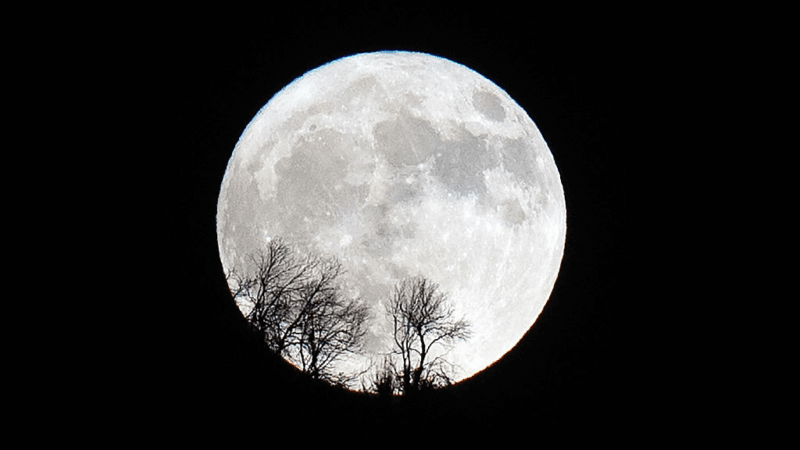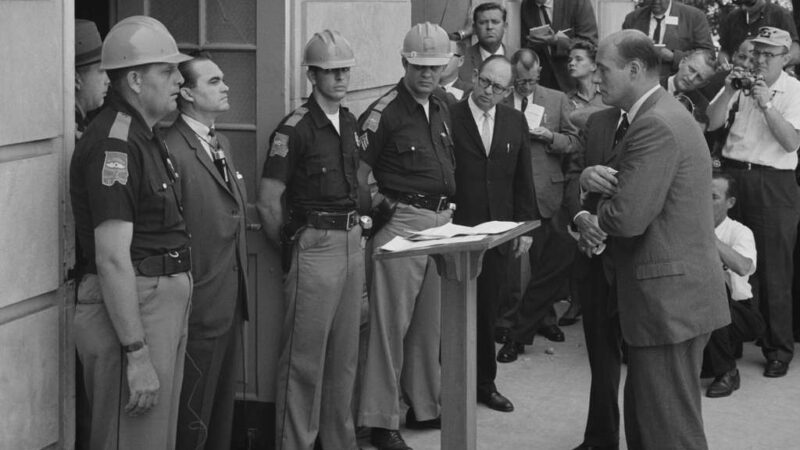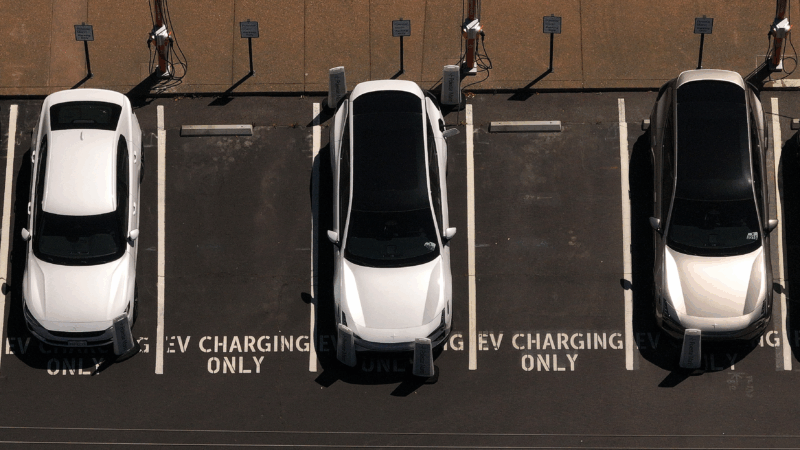NASA plans to put a nuclear reactor on the moon. Here’s what that means.
The Trump administration is accelerating plans to place a nuclear reactor on the moon to power a base for humans.
The reactor would launch to the moon by 2030, according to a directive by Acting NASA Administrator Sean Duffy that was sent to NASA officials in July and obtained by NPR. It’s an ambitious target that has some in the scientific community concerned about high costs and a potentially unrealistic schedule.
The plan follows the United States’ goal to return astronauts to the moon and be a leader in space exploration as China and Russia also aim to use nuclear power on the moon by the end of the decade. Duffy said during a press conference on Tuesday that using nuclear energy as a power source on the moon is necessary to sustain life there – and that the U.S. is behind in its efforts.
“There’s a certain part of the moon that everyone knows is the best. We have ice there. We have sunlight there. We wanna get there first and claim that for America,” Duffy said.
Here is what to know about the administration’s plans, and how using a nuclear reactor as a power source on the moon could work.
Why a nuclear reactor on the moon?
Spacecraft orbiting the Earth or stationed on the moon are typically powered by solar panels. But for any long-term human occupation of the moon, solar power alone won’t be enough according to Roger Myers, an expert on space-based nuclear power.
“The sun sets on the moon for two weeks,” he says. “You have to have another source of energy: The sun and batteries do not work. We’re going to have to have nuclear power.”
NASA now wants to launch a nuclear reactor of at least 100 kilowatts electric output, according to the directive. This would generate less power than typical nuclear reactors in the U.S. and could power only 70 to 80 homes, scientists say.
How would it work?
Nuclear reactors on the moon work in much the same way as reactors on Earth, according to Bhavya Lal, a former associate administrator for technology, policy and strategy at NASA. A controlled nuclear reaction in uranium fuel is used to generate heat that in turn can be used to make electricity.
That’s very similar to how the 94 commercially operated nuclear reactors in the U.S. operate, according to the U.S. Department of Energy. A typical nuclear reactor in the U.S. generates at least one gigawatt of power, which is equivalent to 100 million LED light bulbs, according to the department.
The key difference between Earth and the moon is that “on Earth we have an atmosphere, so we can cool these reactors,” Lal says. Many nuclear reactors are cooled by water, which in turn discharges the excess heat into the reactors.
Without an atmosphere or any bodies of water, nuclear reactors on the moon need to radiate their excess heat directly into space. That means they need large radiators that can help them dissipate the heat load. The reactors’ design also requires them to operate at higher temperatures than on Earth.

What are the risks and dangers?
Moonquakes and meteorite strikes could damage a reactor, but the chances are slim. Moreover, even if something did happen on the surface, “there’s no wind, there’s no water that would move the radioactivity around,” says Patrick McClure, the chief operating officer of SpaceNukes, a company developing space-based nuclear reactors. That’s in contrast to Earth, where radioactive fallout can be spread over long distances by wind and rain.
Kathryn Huff, professor of nuclear, plasma, and radiological engineering at the University of Illinois at Urbana-Champaign, said a nuclear reactor being on the moon is not the primary safety issue — the main concern is getting the reactor up there and what happens once it reaches the end of its lifespan. It is unclear how long the reactor could operate, but most in the U.S. can last at least 80 years, according to the Department of Energy.
“It cannot blow up the moon,” said Huff, who was also assistant secretary for Nuclear Energy at the Department of Energy under the Biden administration. “If you’re considering bringing that reactor off the moon someday, making sure that its reentry into the Earth’s atmosphere is flawless will be pretty important because I think no one really wants to see a repeat of the Kosmos 954 [incident].”
Kosmos 954, a nuclear-powered satellite by Russia, malfunctioned in January 1978 while reentering Earth’s atmosphere and exploded over Canada, spreading radioactive debris across the country.
McClure says that there are safety measures in place to ensure uranium fuel used in any lunar reactor would not be radioactive when it is launched. Moreover, he says, the reactor would not be activated until it reached what he described as a “nuclear safe orbit” of at least 621 miles above Earth.
Is this the right time?
The news that NASA will be developing reactors for the moon comes at a particularly challenging time for the agency.
At least 20% of NASA’s workforce has opted to leave the agency through the Trump administration’s deferred resignation program, and the administration has also proposed decreasing NASA’s budget. A fiscal year 2026 budget request released in May would reduce funding for the agency by about 24%, from nearly $25 billion to nearly $19 billion — though the House and Senate are discussing recommendations that would keep funding for the agency around the current budget.
However, the agency recently got a boost, reversing earlier proposals to retire some NASA programs, including funding towards upcoming moon missions. Trump’s One Big Beautiful Bill Act allocates nearly $10 billion in additional funding for NASA through 2032, including backing for Mars missions and plans to return to the moon.
The reactor project could consume a lot of that money. Lal and Myers estimated in a recent report that developing such a reactor would cost around $3 billion over five years.
In his directive, Duffy said that if China or Russia were to reach the moon first, either country could “potentially declare a keep-out zone which would significantly inhibit” the U.S. from establishing presence if it’s not there first.
But the urgency to return to the moon with a nuclear reactor in a five-year timeline will be extremely difficult to meet, said Huff. She also suggests there should be a multi-year authorization process that includes input from several agencies, including NASA and the Energy Department, on nuclear safeguards before and after launch.
The U.S. should also prioritize the science of the mission and not focus on being first, Huff also said.
“You have to center a lot of this work, especially in space, in the scientific and technological community rather than in a community of the military and defense,” she said. “I do hope to see that NASA’s leadership in this space will imbue the project with a sense of international collaboration with our friends and allies.”
How George Wallace and Bull Connor set the stage for Alabama’s sky-high electric rates
After his notorious stand in the schoolhouse door, Wallace needed a new target. He found it in Alabama Power.
FIFA president defends World Cup ticket prices, saying demand is hitting records
The FIFA President addressed outrage over ticket prices for the World Cup by pointing to record demand and reiterating that most of the proceeds will help support soccer around the world.
From chess to a medical mystery: Great global reads from 2025 you may have missed
We published hundreds of stories on global health and development each year. Some are ... alas ... a bit underappreciated by readers. We've asked our staff for their favorite overlooked posts of 2025.
The U.S. offers Ukraine a 15-year security guarantee for now, Zelenskyy says
Ukrainian President Volodymyr Zelenskyy said Monday the United States is offering his country security guarantees for a period of 15 years as part of a proposed peace plan.
Genre fiction and female authors top U.S. libraries’ most-borrowed lists in 2025
All of the top 10 books borrowed through the public library app Libby were written by women. And Kristin Hannah's The Women was the top checkout in many library systems around the country.
Electric vehicles had a bumpy road in 2025 — and one pleasant surprise
A suite of pro-EV federal policies have been reversed. Well-known vehicles have been discontinued. Sales plummeted. But interest is holding steady.








